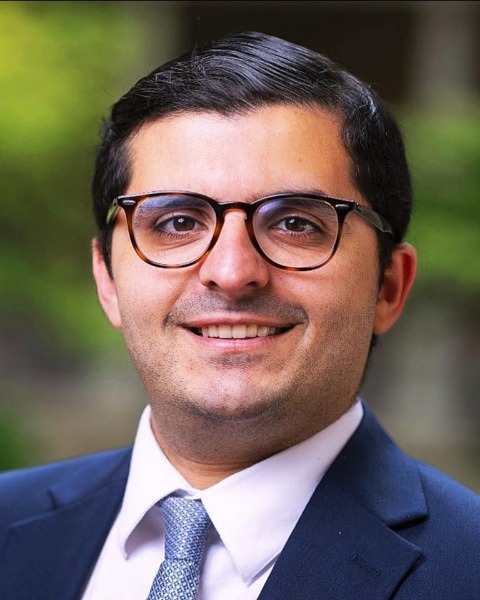Oncology
Deep Learning-Based Risk Calculator for 5-Year Survival Prediction in Spinal Chordoma Versus Chondrosarcoma: A Nationwide Analysis
Friday, February 21, 2025
7:00 AM - 2:00 AM EST

Abdul Ghaith, MD, PhD
Post-Doctoral Neurosurgery Research Fellow
Johns Hopkins University
Baltimore, MD, US
Presenting Author(s)
Introduction: Chordoma and chondrosarcoma are rare, aggressive bone malignancies with distinct origins and are both challenging to manage due to their proximity to critical structures and limited response to conventional therapies. Nevertheless, there is still a lack of systemic comparative studies between them. This study aims to investigate the differences in clinical characteristics and survival outcomes between these two malignancies and develop a web-based application for predicting long-term survival that is accessible to the public.
Methods: In this retrospective study, univariate analyses were used to compare demographics, treatment modalities, and survival outcome data. Kaplan-Meier (KM) survival analysis to access overall survival (OS). The predictive performance of multiple machine learning models was evaluated through ROC curve analysis (Area Under the Curve), Brier score and C-index analysis.
https://huggingface.co/spaces/AKG47/spinetumorsNCDB
Results: Overall, chondrosarcoma patients had a higher 5-year mortality rate than chordoma patients (36.0% vs 25.7%, p< 0.001). Chordoma patients had significantly larger age mean (59±15yr vs 54±17yr, p< 0.001) and higher proportion of White patients than Chondrosarcoma (82.8% vs 77.0%, p< 0.001). Chordoma patients had significantly smaller tumors (91.4±95.9mm3 vs 113.4±118.1mm3, p< 0.001) but comprised a higher proportion of patients with Charlson–Deyo Comorbidity Class (CDCC) score of 1 or above (19.6% vs 16.1%, p=0.037). Gross total resection (GTR) was more frequent in chondrosarcoma patients (82.2% vs 72.2%, p< 0.001), while radiation was more frequent in chordoma patients (40.6% vs 16.3%, p< 0.001). KM analysis showed that chordoma patients without radiation had the best OS, while chondrosarcoma patients with radiation had the poorest OS (p < 0.0001). GTR in chordoma patients had the best OS, whereas subtotal resection (STR) in chondrosarcoma patients had the worst survival (p < 0.0001). The Gradient Boosting Classifier model had the highest AUC (0.826), identifying age, diagnosis, and extent of resection as the most significant survival predictors.
Conclusion : Chordoma patients generally experience better long-term survival than chondrosarcoma patients, with significant influences from radiation therapy and extent of resection. Gradient Boosting emerged as the best predictive model, underscoring age, diagnosis, and resection extent as crucial factors in survival. These findings highlight the need for tailored treatment strategies, with predictive modeling offering valuable insights for optimizing patient outcomes.
Methods: In this retrospective study, univariate analyses were used to compare demographics, treatment modalities, and survival outcome data. Kaplan-Meier (KM) survival analysis to access overall survival (OS). The predictive performance of multiple machine learning models was evaluated through ROC curve analysis (Area Under the Curve), Brier score and C-index analysis.
https://huggingface.co/spaces/AKG47/spinetumorsNCDB
Results: Overall, chondrosarcoma patients had a higher 5-year mortality rate than chordoma patients (36.0% vs 25.7%, p< 0.001). Chordoma patients had significantly larger age mean (59±15yr vs 54±17yr, p< 0.001) and higher proportion of White patients than Chondrosarcoma (82.8% vs 77.0%, p< 0.001). Chordoma patients had significantly smaller tumors (91.4±95.9mm3 vs 113.4±118.1mm3, p< 0.001) but comprised a higher proportion of patients with Charlson–Deyo Comorbidity Class (CDCC) score of 1 or above (19.6% vs 16.1%, p=0.037). Gross total resection (GTR) was more frequent in chondrosarcoma patients (82.2% vs 72.2%, p< 0.001), while radiation was more frequent in chordoma patients (40.6% vs 16.3%, p< 0.001). KM analysis showed that chordoma patients without radiation had the best OS, while chondrosarcoma patients with radiation had the poorest OS (p < 0.0001). GTR in chordoma patients had the best OS, whereas subtotal resection (STR) in chondrosarcoma patients had the worst survival (p < 0.0001). The Gradient Boosting Classifier model had the highest AUC (0.826), identifying age, diagnosis, and extent of resection as the most significant survival predictors.
Conclusion : Chordoma patients generally experience better long-term survival than chondrosarcoma patients, with significant influences from radiation therapy and extent of resection. Gradient Boosting emerged as the best predictive model, underscoring age, diagnosis, and resection extent as crucial factors in survival. These findings highlight the need for tailored treatment strategies, with predictive modeling offering valuable insights for optimizing patient outcomes.

.jpg)